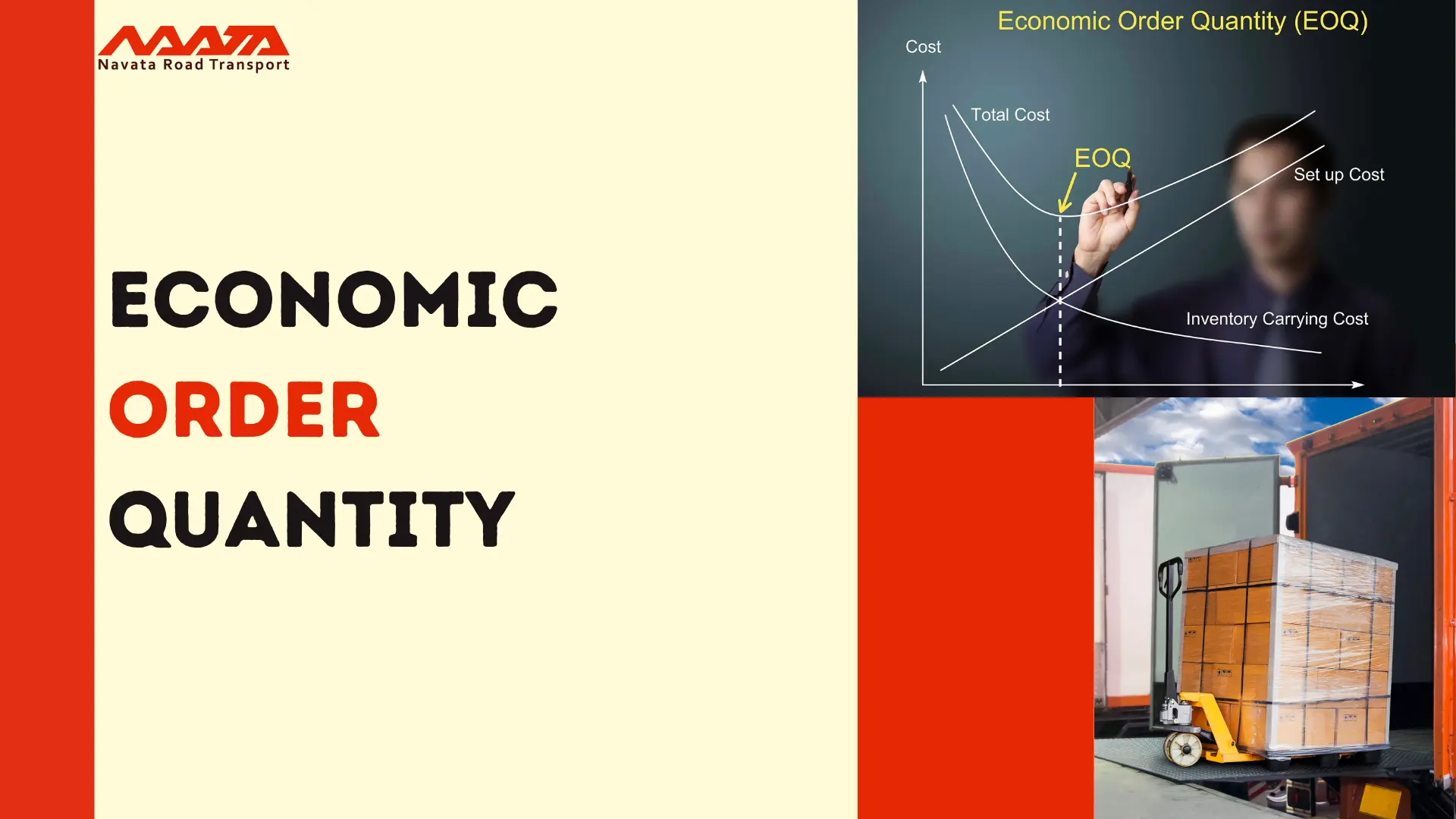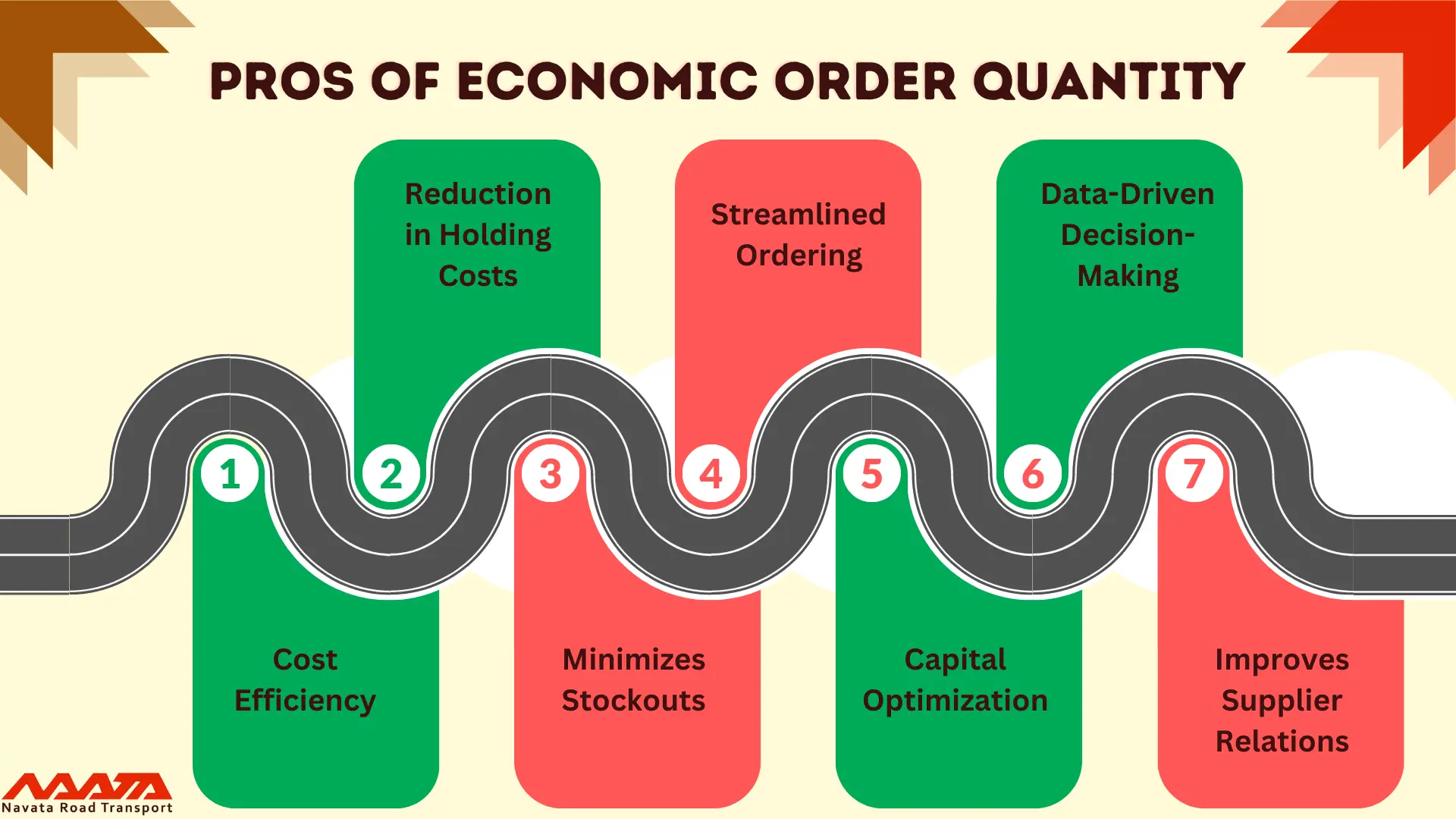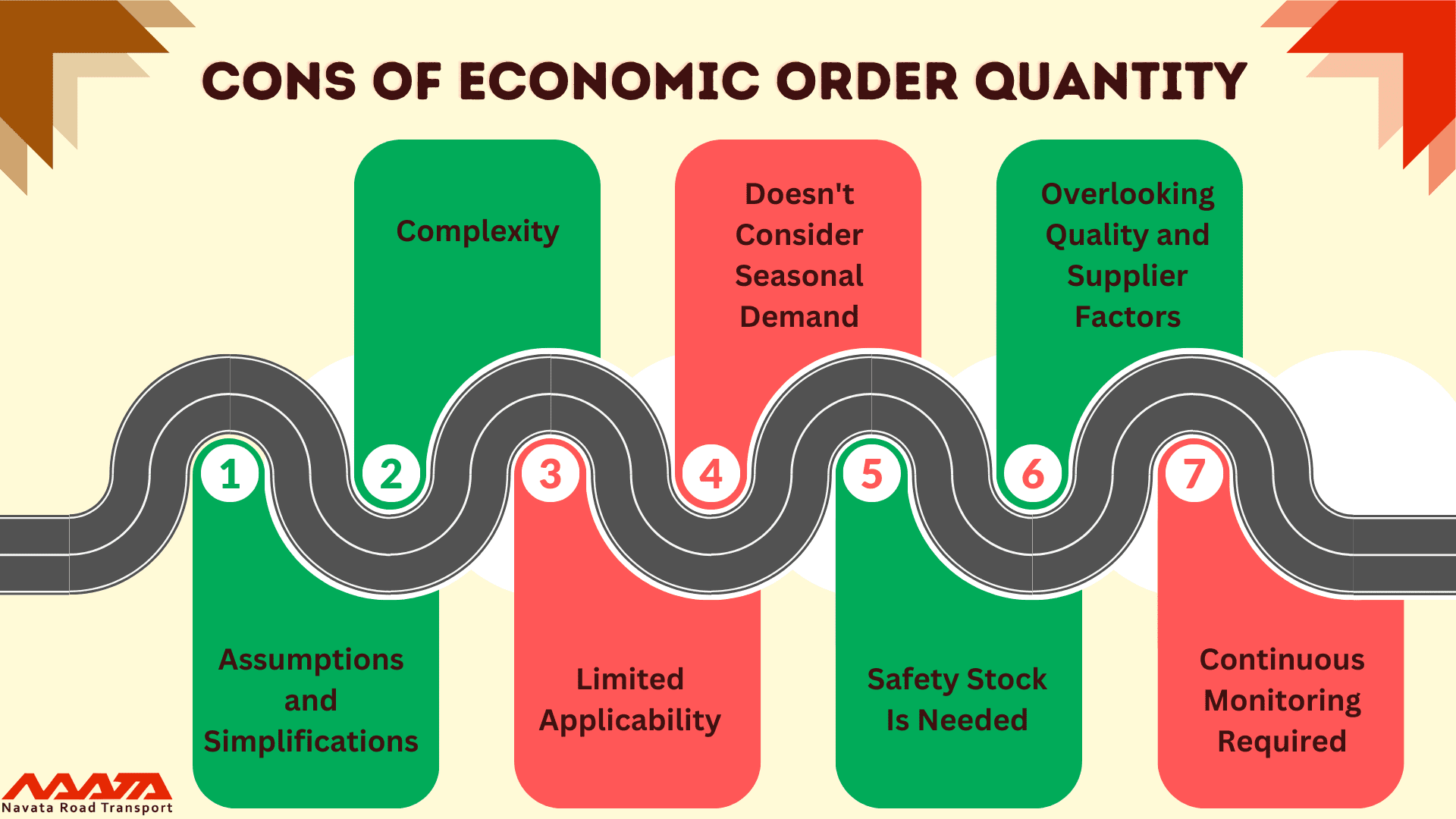Economic Order Quantity (EOQ): Definition, Pros & Cons
Table of Contents
Economic Order Quantity Inventory Management (EOQ)
Economic Order Quantity (EOQ) is a widely used inventory management technique that helps businesses determine the optimal order quantity for a particular item while minimizing the total inventory costs.
The primary goal of EOQ is to balance the costs associated with ordering and holding inventory. EOQ is particularly useful for businesses that want to strike a balance between keeping adequate stock levels to meet customer demand and minimizing the costs associated with holding excess inventory.
It’s important to note that while EOQ is a valuable tool for optimizing inventory management, it makes certain simplifying assumptions that may only hold in some situations.
You Might Also Like To Read: Inventory Management Techniques: 5 Effective Methods

How Does Economic Order Quantity Inventory Management Work?
Economic Order Quantity (EOQ) inventory management works by helping businesses determine the optimal order quantity for a particular item, balancing the costs associated with ordering and holding inventory. Here’s how EOQ works in practice:
Gather Relevant Information
- Demand (D): Determine the annual demand for the product. This is the quantity of the product that your business expects to use or sell in a year.
- Ordering Costs (S): Calculate the cost incurred each time an order is placed. This includes administrative costs, transportation costs, and other expenses related to the procurement process.
- Holding Costs (H): Determine the annual holding cost per unit of inventory. This includes expenses like warehousing, insurance, and the opportunity cost of tying up capital in inventory.
- Unit Cost: Know the cost of each unit of inventory.
Calculate EOQ
Use the EOQ formula to find the optimal order quantity:
EOQ = √((2 * D * S) / H)
- EOQ: Economic Order Quantity
- D: Annual demand for the product
- S: Ordering cost per order
- H: Annual holding cost per unit
Determine Reorder Point
To maintain inventory at the optimal level, calculate the reorder point. The reorder point ensures that you place an order when the stock reaches a specific group to avoid stockouts. It is determined using the formula:
Reorder Point = (D / 365) * Lead Time
- D: Annual demand
- 365: The number of days in a year
- Lead Time: The time it takes for an order to be delivered
Continuous Monitoring
Implement a continuous review system. Regularly monitor the inventory levels. When the inventory level reaches or falls below the reorder point, initiate an order for the EOQ.
Safety Stock
Consider the need for safety stock, which is additional inventory held to account for demand variability and lead time variability. Safety stock helps prevent stockouts during unexpected surges in demand or longer-than-expected lead times.
Cost Optimization
EOQ aims to minimize the total cost of inventory, which is the sum of ordering costs and holding costs. By using EOQ, businesses can optimize their inventory management strategy, striking a balance between minimizing the costs of collecting too frequently and maintaining excess inventory.
Batch Ordering
EOQ typically results in batch ordering, in which more significant amounts are requested less frequently. This can lead to cost reductions in cost containment. However, it is critical to ensure that you have enough storage space.
Regular Review
Keep in mind that business conditions change, so it’s essential to review and adjust your EOQ calculations regularly to account for fluctuations in demand, costs, and other variables.
Read About: Just In Time Inventory

Pros of Economic Order Quantity Inventory Management Work
Cost Efficiency
EOQ helps minimize total inventory costs by finding the optimal balance between ordering costs and holding costs. This can lead to cost savings for the business.
Reduction in Holding Costs
EOQ helps in reducing holding costs by ordering the right quantity at the right time, thus avoiding overstocking.
Minimizes Stockouts
By using the reorder point calculated with EOQ, you can ensure that you have enough stock to meet customer demand, reducing the risk of stockouts.
Streamlined Ordering
EOQ promotes batch ordering, which can lead to fewer orders with larger quantities, simplifying the procurement process.
Capital Optimization
By minimizing holding costs and avoiding overstock, EOQ helps optimize the allocation of capital, ensuring it is not tied up in excess inventory.
Data-Driven Decision-Making
EOQ relies on quantitative calculations, which means decisions are based on data and not solely on intuition or guesswork.
Improves Supplier Relations
Consistent, well-planned orders can lead to better relationships with suppliers, potentially resulting in more favorable terms and discounts.

Cons of Economic Order Quantity Inventory Management Work
Assumptions and Simplifications
EOQ relies on several assumptions, such as constant demand and holding costs, which may only sometimes hold true in real-world scenarios. Deviations from these assumptions can lead to suboptimal results.
Complexity
Calculating EOQ can be complex and time-consuming, especially for businesses with numerous products and changing variables.
Limited Applicability
EOQ is best suited for products with stable demand patterns. For items with highly variable demand or unpredictable lead times, EOQ may be less effective.
Doesn’t Consider Seasonal Demand
EOQ needs to account for products with seasonal demand patterns, which might require different ordering strategies.
Safety Stock Is Needed
EOQ does not provide a solution for sudden changes in demand or supply disruptions. Safety stock is often required, adding complexity to the inventory management process.
Overlooking Quality and Supplier Factors
EOQ focuses primarily on cost optimization and may manage other factors, such as product quality, vendor reliability, or ethical considerations.
Continuous Monitoring Required
To fully benefit from EOQ, inventory levels need to be regularly monitored, and orders need to be placed when the reorder point is reached. This can be time-consuming and requires ongoing attention.
Thanks For Reading: Economic Order Quantity (EOQ): Definition, Pros & Cons




